Justices Write Laws That Openly Discriminate Against Whites
Jared Taylor, American Renaissance, December 16, 2022
And no one is paying attention.
Thumbnail credit: Harvey Barrison via Flickr, CC BY-NC-SA 2.0.
This video is available on Rumble, BitChute, and Odysee.
There are nine justices on the Washington State Supreme Court. Only one is a white man.
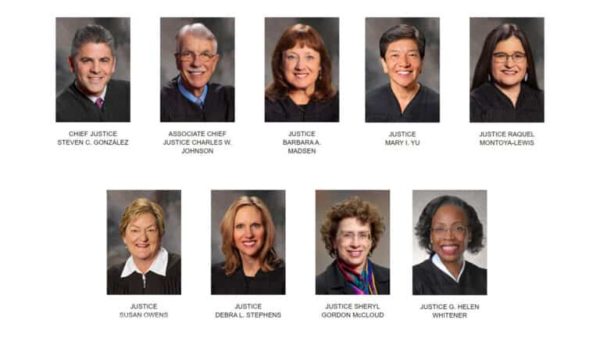
There are, in various combinations, seven women, four non-whites, three Jews, two lesbians, a member of an Indian tribe, and a black immigrant from Trinidad. The chief justice is Hispanic.
This riot of diversity is handing down rulings that openly discriminate against white people. Last summer I did a video on its ruling in State v Sum, which explains that certain kinds of evidence can be used against a white criminal but must be thrown out if the criminal is non-white.
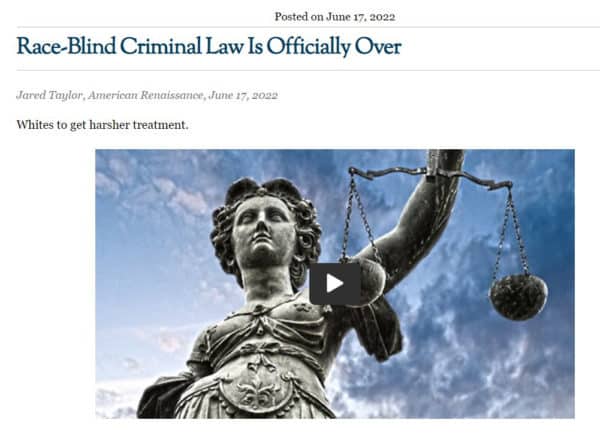
The race of the defendant is the only thing that matters. I know it sounds hard to believe, but watch my video or read the transcript. That ruling was written by Justice Mary Yu, the first Latina and first openly homosexual justice on the Washington State Supreme Court.
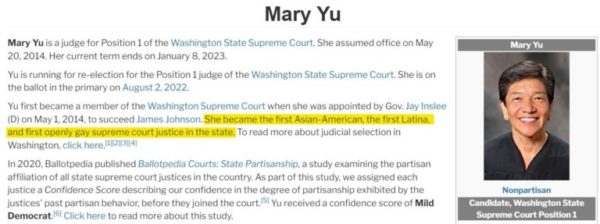
Now her colleague, Justice Raquel Montoya-Lewis has written another equally astonishing anti-white decision. Here she is, on the left with Mary Fairhurst, the justice she replaced on the court.
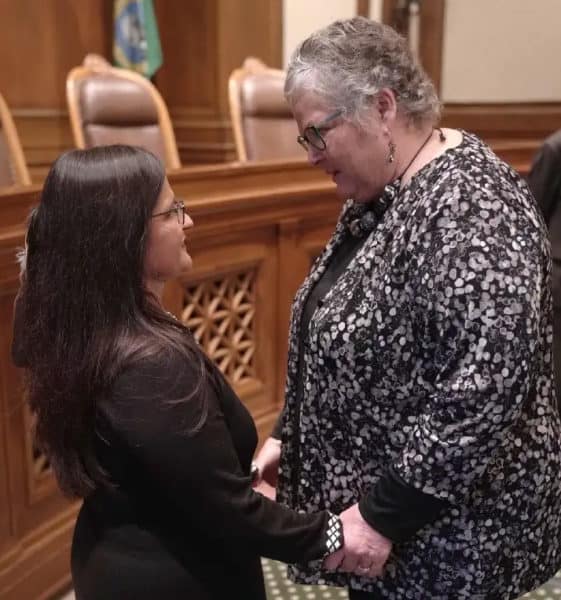
Justice Montoya-Lewis was born in Spain to an American Indian father and a Jewish mother, and is the only enrolled member of a tribe to sit on a state supreme court.
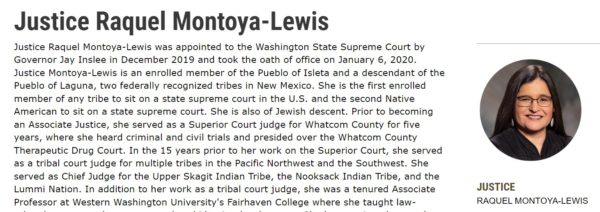
She was the Chief Judge of the Upper Skagit Indian Tribe, the Nooksack Indian Tribe, and the Lummi Nation before she made the almost unprecedented switch to judging state law rather than tribal law.
She wrote the decision in Henderson v Thompson, handed down in October.
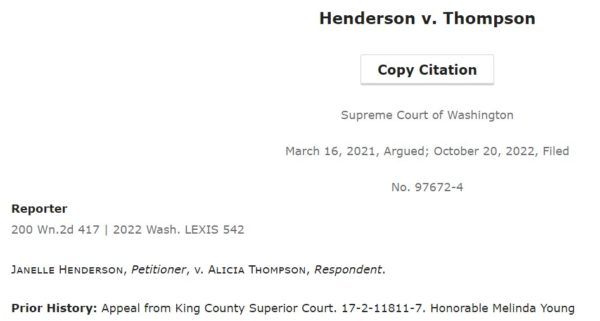
This hair-raising ruling is practically unknown. I have seen it mentioned on only two obscure blogs.
In this case, a white woman, Alicia Thompson, rearended a black woman, Janelle Henderson. The black woman claimed the accident made a pre-existing condition so much worse she couldn’t even go out in public. She sued the white woman for $3.5 million in medical damages, a huge sum for a fender-bender. Alicia Thompson never denied she hit Miss Henderson; the only question was the amount of damages.
At trial, Miss Thompsons’s defense counsel showed surveillance video of Janelle Henderson at work, with no noticeable disability. This did not stop Miss Henderson from calling three black witnesses to testify about how badly the accident had hurt their friend. They all used the same phrase to describe what she used to be like before the accident: “the life of the party.”
Heather Jensen, a white woman, defended Alicia Thompson, and she did three things that the Washington State Supreme Court said could have injected race into the trial and biased the jury.
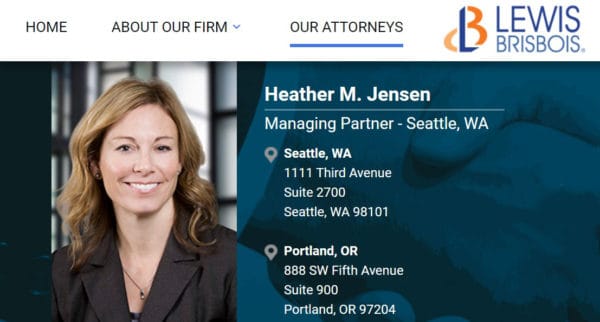
First, in her closing argument, she said it might not have been a coincidence that the three black friends all used the same phrase. They might have been coached to say Miss Henderson used to be “the life of the party.”
Second, defense counsel Heather Jenson said this about the black accident victim: “when it’s my turn to cross-examine her, she’s not interested in the search for truth; she’s interested in being combative.”

She also called her “confrontational.”
Third, Miss Jensen said Miss Henderson seemed more interested in money than in medical relief, because she didn’t even tell her doctor about the accident until someone gave her the idea she might be able to get $3.5 million in a lawsuit. The jury granted only $9,000 in damages.
Miss Henderson’s lawyer, a black woman named Vonda Sargent, filed an appeal, saying Miss Jensen’s comments evoked racial stereotypes about black women, and this so tainted the proceedings that there should be a new trial.
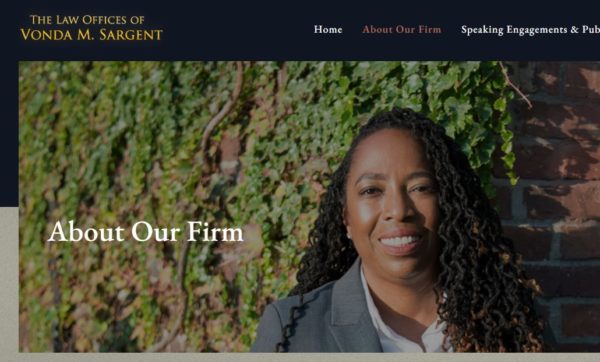
The trial judge, Melinda Young, refused to grant a new trial.
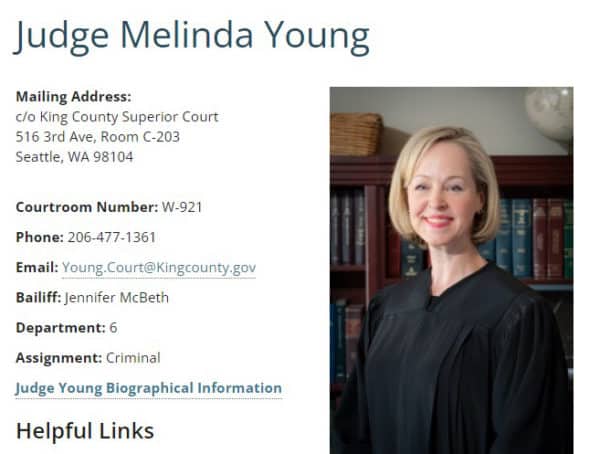
She saw nothing impermissible in Miss Jensen’s arguments. Miss Henderson appealed to the State Supreme Court — and won.
That means that if you agreed with the trial judge — that there’s no evidence the proceedings were racially biased — you’re just not as smart as seven women, four non-whites, three Jews, two lesbians, an Indian, and a Trinidadian.
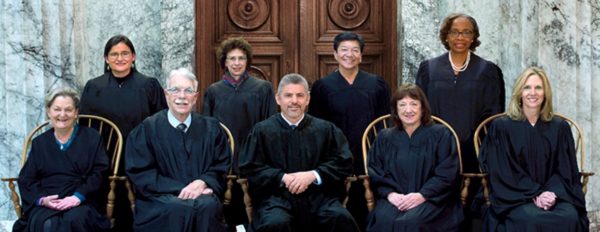
They set the stage in in the very first paragraph of their ruling: “Racism is endemic, and its harms are not confined to any place, matter, or issue.”

And they quickly got to the central question: “whether an objective observer (one who is aware that implicit, institutional, and unconscious biases . . . have influenced jury verdicts in Washington State) could view race as a factor in the verdict.”

Please note: an “objective observer” is someone who believes in and can sniff out “implicit, institutional, and unconscious biases.”
If that gifted person says, “Yes! There was unconscious bias,” then the trial judge must order a hearing on whether the alleged victim of bias deserves a new trial.
The justices ordered such a hearing for Miss Henderson because “Thompson’s counsel primed the jurors with appeals to racial bias throughout the trial.”

The worst thing Heather Jensen did was to call Miss Henderson, the black opposing party “combative” and “confrontational,” because “these terms evoke the harmful stereotype of an ‘angry Black woman’.”

This was almost as bad: “Defense counsel’s argument that Henderson was exaggerating or fabricating her injuries appealed to these negative and false stereotypes about Black women being untrustworthy, lazy, deceptive, and greedy.”

And this was pretty awful, too: “Intimating that the Black witnesses had joined together to lie for the Black plaintiff could invite jurors to suspect them as a group and to make decisions based on biases about race and truthfulness.”

That was enough to claim racial bias, which then requires a hearing to determine whether there should be a new trial.
So what’s supposed to happen at the hearing? Innocent until proven guilty, right? Wrong! Even for a jaded guy like me it’s hard to believe, but “At that hearing, the party seeking to preserve the verdict — that’s whitey — bears the burden to prove that race was not a factor.”

This means poor Heather Jensen and her white client have to go before a judge and prove that race had nothing to do with the verdict.

That’s impossible. Even if they subpoenaed all jurors and compelled them to testify — which they can’t do — and every one of them swore on a stack of Bibles that race wasn’t an issue at all, Vonda Sargent could accuse them of unconscious bias. She could quote the supreme court ruling: “Racial bias can influence our decisions without our awareness.”
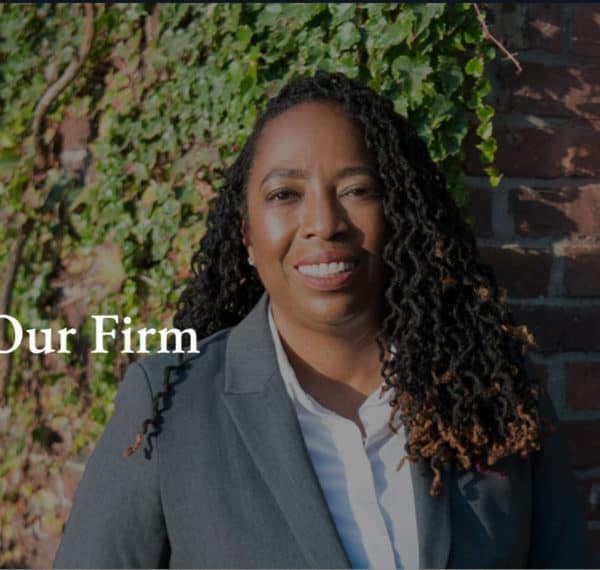
I can hear her cross-examination now: “Are you saying, before this court and under penalty of perjury, that you are conscious of everything of which you are unconscious? That you aware of everything of which you are unaware? Is that your testimony?”
Under these conditions, why even hold a hearing? The Supreme Court even said that the trial judge, Melinda Young, is disqualified to preside over it. That’s because, according to the justices, “She agreed with Thompson’s counsel that it was fair to describe Henderson’s demeanor during cross-examination as ‘combative’ and ‘confrontational,’ opining that this language should be excused because the term was ‘race neutral’ and tied to the evidence.”

If you call a black witness combative — even if she was a terror on the stand — that’s not race neutral. It’s racist.
So in any Washington State Court, if you are in litigation against a black and he gets a verdict he doesn’t like, all he has to do is claim there was implicit, institutional, or unconscious bias against him. You can’t prove there wasn’t, so you have to keep giving the opposing party — and this no doubt also applies to Hispanics or transexuals or American Indians or homosexuals or fat people or immigrants — new trials until he, she, or it gets a favorable verdict.
You can say that a white witness or lawyer is confrontational. Lawyers do it all the time. You can say that a white plaintiff is greedy or faking it or got his friends to lie for him. But if you say that about someone in a protected class, he can yell that you evoked unconscious bias in the jury, and you have to prove you didn’t. Why even go to trial? Just give a non-white plaintiff whatever he asks for.
These supreme court justices are as crazed as any sociology professor — with the crucial difference that they can legislate from the bench.
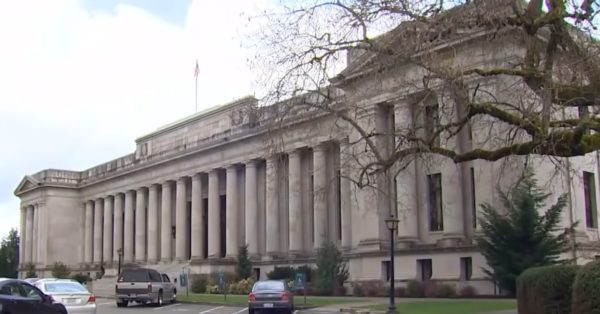
The Seattle Times has noticed this, and of course, thinks it’s great: “ ‘We’re not colorblind’: Two years after George Floyd, WA Supreme Court tries to chart a different path on race.”
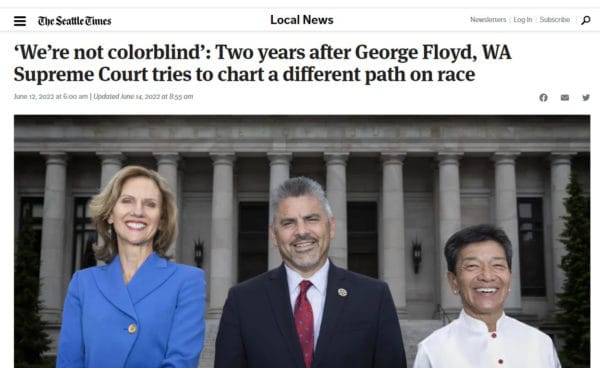
Justice is supposed to be blind, but these judges are proud they aren’t.
And they’ve been hard at work. As this article notes: “The court has overturned decades-old hateful precedents, with little public notice. It has thrown out laws, vacating tens of thousands of criminal convictions. It has ordered pay raises to thousands of immigrant farmworkers.”
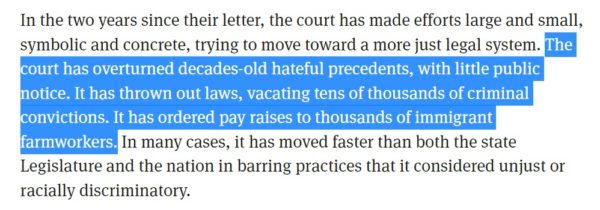
Note the words, “with little public notice.”
I know of no law journal or even a single mainstream news site that has mentioned either of the two outrageous rulings I have talked about. There are probably plenty more that are equally bad.
It’s easy to think of cases in which the color-blind language of the law has been applied in ways that were unfair. The gentle treatment of the BLM rioters versus long jail sentences for Jan 6 rioters is an obvious example.
But this state supreme court has gone much farther and written racial discrimination right into the law. Once that starts, immense damage can be done. And as the bench fills up with more “diverse,” anti-white zealots, that’s exactly what we will get.















